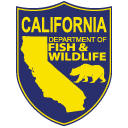
The idyllic shoreline of Laguna Beach is made up of rocky headlands with towering cliffs, sandy beaches and a myriad of tide pools teeming with life. It is also home to one of the largest coastal “no-take” marine protected areas (MPAs) in southern California. Located adjacent to a densely populated city, the area is a popular attraction for scuba diving, snorkeling, swimming, beach walking and sun bathing. These popular activites make Laguna Beach State Marine Reserve (SMR) and Laguna Beach State Marine Conservation Area (SMCA) two of the most visited MPAs in California’s statewide network.
Laguna Beach SMR and SMCA, along with 48 other MPAs along California’s southern coast, were established in 2012 to protect critical marine species and habitats, including intertidal tide pools, kelp forests, sandy beaches, and subtidal rocky reef. Bounded by Abalone Point to the north and Aliso Creek to the south, the combined areas protects 7.41 square nautical miles of coastal habitats. Add Crystal Cove SMCA to the north and Dana Point SMCA to the south, and the four MPAs together cover approximately 14 square miles of coastal habitat from Corona del Mar State Beach to Dana Point. These four MPAs combined create the greatest continuous length of MPA protection along the southern California mainland.

© Patsee Ober Photography http://www.pophotography.com
Responsible tide pooling rules include the following:
• Don’t take anything alive or dead! Even empty shells can one day provide a valuable home for a tidepool critter, like a hermit crab.
• Please consider just using your eyes to explore the tidepools. If you must touch the animals, do so very gently with only one wet finger.
• Please do not poke, prod, or pry an animal off a rock.
• Walk gently and only step on bare rock.
• Don’t turn rocks or stones over, as you can injure the delicate animals living there.
Laguna Beach has fascinating tide pools. These intertidal habitats act as natural aquariums, offering a glimpse of the marine life often hidden beneath the water’s surface. During each high tide, the rocky shoreline in the intertidal area is covered with ocean water, and as the tide recedes, water is trapped in rocky holes forming pools separated from the ocean. The tide pools are inhabitated by a diverse number of species uniquely adapted to living there, including fragile sea anemones, colorful sea stars, camouflaged gobies, hardy seaweeds, and scampering crabs. Because they are easy to access, tide pools have fascinated naturalists, beach goers, tourists and marine biologists alike for many years. The best places to go tide pooling at Laguna Beach are a short walk north of Main Beach at the end of Broadway Street, and Treasure Island Beach near Treasure Island Park. If you would like to visit the tidepools please see the Visit Laguna Beach website for more information.

CDFW photo by R. Win
Tide pools are one of many MPA habitats that scientists monitor. Monitoring and research play important roles in making informed, adaptive management decisions, as directed by the Marine Life Protection Act. Baseline monitoring, the process of recording the initial ecological and socioeconomic conditions inside and outside of MPAs at or near the time they’re established, provides a benchmark against which future changes can be measured. In southern California, baseline monitoring began in 2011 and has since revealed a great diversity of subtidal animals and seaweeds in the Laguna Beach MPAs. For example, MPA baseline monitoring of subtidal rocky reef habitats in Laguna Beach SMR found the diversity of fish, invertebrates and seaweeds to be some of the highest of all mainland southern California MPAs. Baseline monitoring has characterized the habitats along this stretch of coast, and in time will allow the California Department of Fish and Wildlife (CDFW) and partner organizations to measure the efficacy of California’s MPA network.
Support from the local community was essential in establishing the Laguna Beach SMR and SMCA. Partnerships with the Laguna Ocean Foundation, Orange County Coast Keeper, Laguna Blue Belt, Orange County MPA Collaborative, and many others has enabled cohesive management of the reserve and creation of educational opportunities for local schools.

CDFW photo by R. Win
The ocean is important to local residents. When asked to describe why, one resident said, “It reminds you how free and wild the ocean is, in the chaos of the urban environment.” Others felt that the ocean is one of the only places left that is free and accessible.
In essence, these areas allow us all to experience some peace and quiet in our busy lives, so get out there and let your mind unravel in the stunning beauty that the Laguna Beach MPAs provide. You can visit CDFW’s MPA Network web page for more information about the California MPA network.
Laguna Beach State Marine Reserve and Laguna Beach State Marine Conservation Area are two of the 124 MPAs in California’s statewide MPA Network. Please visit CDFW’s MPA website for more information, and sign up to receive updates about the MPA Management Program.
 post by Robert Win, CDFW Environmental Scientist
post by Robert Win, CDFW Environmental Scientist
Learn more about MPAs by diving into the
Exploring California’s Marine Protected Areas series!

